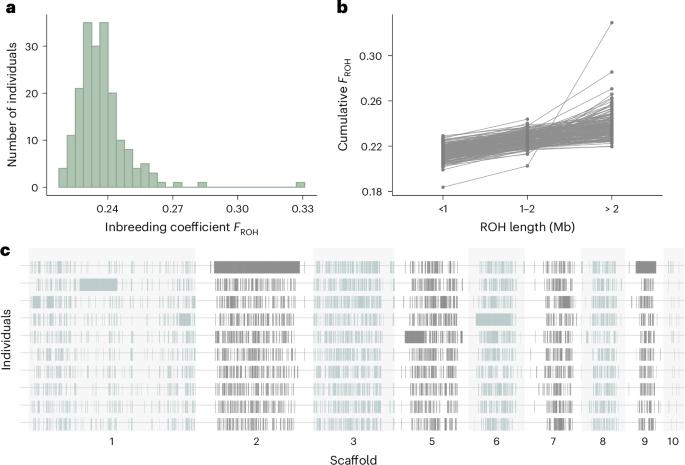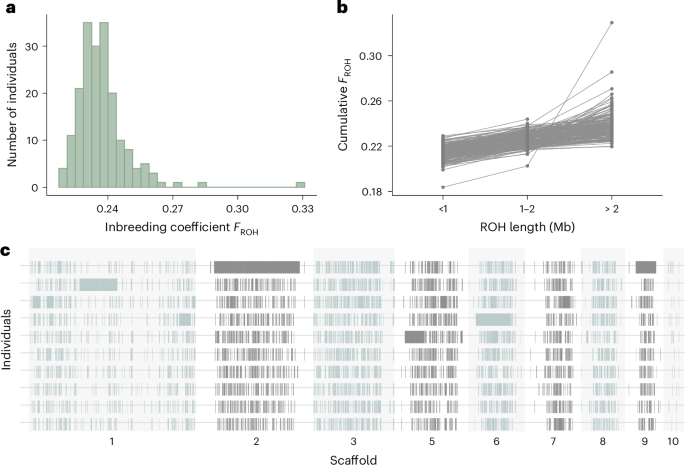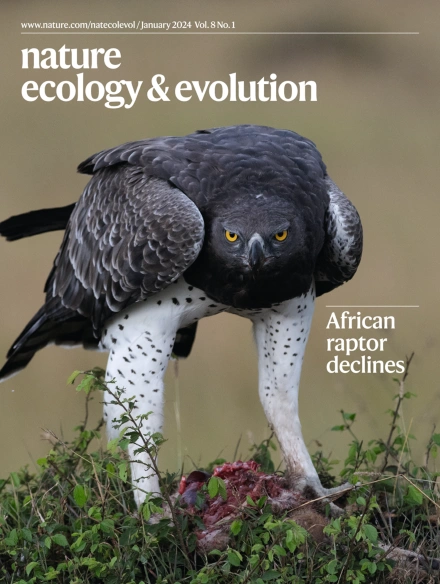Predicted deleterious mutations reveal the genetic architecture of male reproductive success in a lekking bird
IF 13.9
1区 生物学
Q1 ECOLOGY
引用次数: 0
Abstract
Deleterious mutations are ubiquitous in natural populations and, when expressed, reduce fitness. However, the specific nature of these mutations and the ways in which they impact fitness remain poorly understood. We exploited recent advances in genomics to predict deleterious mutations in the black grouse (Lyrurus tetrix), an iconic lekking species. Analysis of 190 whole genomes alongside comprehensive life-history data including repeated measures of behavioural, ornamental and fitness traits revealed that deleterious mutations identified through evolutionary conservation and functional prediction are associated with reduced male lifetime mating success. Both homozygous and heterozygous deleterious mutations reduce fitness, indicating that fully and partially recessive mutations contribute towards an individual’s realized mutation load. Notably, deleterious mutations in promotors have disproportionally negative fitness effects, suggesting that they impair an individual’s ability to dynamically adjust gene expression to meet context-dependent functional demands. Finally, deleterious mutations impact male mating success by reducing lek attendance rather than by altering the expression of ornamental traits, suggesting that behaviour serves as an honest indicator of genetic quality. These findings offer insights into the genetic architecture of male fitness and illuminate the complex interplay between genetic variation and phenotypic expression. Analysis of whole genomes and life-history data of male black grouse shows that deleterious mutations, especially those in promotors, reduce lifetime reproductive success.


预测的有害突变揭示了雄性雏鸟繁殖成功的遗传结构
有害突变在自然种群中无处不在,一旦表达出来,就会降低适应性。然而,这些突变的具体性质以及它们影响适应性的方式仍然知之甚少。我们利用基因组学的最新进展来预测黑松鸡(Lyrurus tetrix)的有害突变,黑松鸡是一种标志性的漏水物种。通过对190个全基因组的分析,以及对行为、观赏和适合度性状的综合生活史数据的重复测量,揭示了通过进化保护和功能预测确定的有害突变与雄性终生交配成功率降低有关。纯合子和杂合子有害突变都会降低适应度,这表明完全隐性突变和部分隐性突变对个体实现的突变负荷都有贡献。值得注意的是,启动子中的有害突变具有不成比例的负适合度效应,这表明它们损害了个体动态调整基因表达以满足上下文依赖功能需求的能力。最后,有害突变影响雄性交配成功的方式是减少韭素的出现,而不是改变观赏性状的表达,这表明行为是遗传质量的可靠指标。这些发现为了解男性适应性的遗传结构提供了见解,并阐明了遗传变异和表型表达之间复杂的相互作用。
本文章由计算机程序翻译,如有差异,请以英文原文为准。
求助全文
约1分钟内获得全文
求助全文
来源期刊

Nature ecology & evolution
Agricultural and Biological Sciences-Ecology, Evolution, Behavior and Systematics
CiteScore
22.20
自引率
2.40%
发文量
282
期刊介绍:
Nature Ecology & Evolution is interested in the full spectrum of ecological and evolutionary biology, encompassing approaches at the molecular, organismal, population, community and ecosystem levels, as well as relevant parts of the social sciences. Nature Ecology & Evolution provides a place where all researchers and policymakers interested in all aspects of life's diversity can come together to learn about the most accomplished and significant advances in the field and to discuss topical issues. An online-only monthly journal, our broad scope ensures that the research published reaches the widest possible audience of scientists.
 求助内容:
求助内容: 应助结果提醒方式:
应助结果提醒方式:


